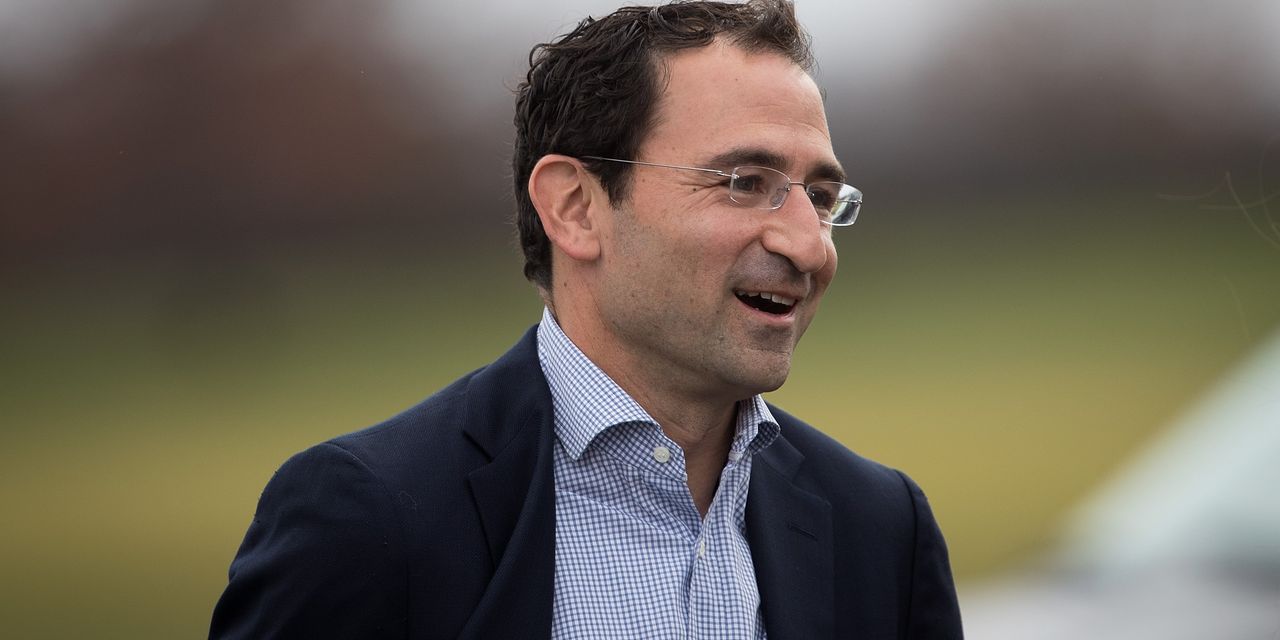Jon Gray, the president of Blackstone Group, the world’s biggest alternative asset investment firm with $1 trillion under management, is watching for signs of an economic slowdown in the coming months, he told MarketWatch in an interview in late October.
“So I think the Fed is going to slow the economy. And that’s really their objective, right?” Gray said.
“They want the labor market to be less tight. They want to slow economic activity and drive prices down in the process, and the old line about you can’t fight the fed—I think that holds true,” he said in the interview you can view below.
Gray runs the day-to-day operations of a private equity and real estate investing behemoth, which also has large hedge fund and credit operations. It is arguably the top firm on Wall Street, landing Gray on The MarketWatch 50 list of the most influential people in markets.
Gray’s comments about the Federal Reserve’s battle with inflation and the likelihood of an economic slowdown as a byproduct of that contest were made days before last week’s reading of gross domestic product, a blockbuster report which showed that U.S. economy grew at an eye-watering 4.9% annualized pace in the third quarter, marking the most robust reading in years.
Estimates leading up to the GDP report suggested that that measure of economic output could have been north of 5%.
Still, a 4.9% third-quarter reading — fueled by an outburst of consumer spending — seems to defy expectations of an impending slowdown.
And expectations for any significant economic slowdown have been defied time and again in the aftermath of the pandemic and as Jerome Powell’s Federal Reserve has catapulted benchmark interest rates from levels at or near 0% to a loftier range of 5.25%-5.5%
Gray, however, says don’t be fooled by all the signs of economic vitality, including the strength of GDP.
“Although, the Fed is slowing things down, you know, the train had a lot of momentum,” says Gray, referring , in part to fiscal measures, such as pandemic-era stimulus payments.
“So, I think they will slow this down. But I do think that momentum means that the the level of deceleration will not be nearly as bad as … we experienced back in” 2008-09 recessions, he said.
It wouldn’t be unprecedented for the U.S. economy to deteriorate substantially from such heights, according to history.
MarketWatch’s Jeff Bartash writes that the economy grew at solid 2.5% pace right before the aforementioned Great Recession that ended in 2009, for example.
Bartash also notes that GDP grew a frothy 4.4% in the first quarter of 1990 just several months before a recession started.
What could a slowing economy look like this time around?
Gray shares some thoughts on that:
“Here it feels like we’re going in on firmer footing. But it does mean that the unemployment rate will likely go up, and it does mean that you’ll see less growth going forward.”
The unemployment rate currently stands at 3.8%.
Gray explains further here:
And when we look at our companies interestingly in our private equity portfolio, in the third quarter, revenue growth was still pretty good high single digits. But when we look at the sequential path it’s generally lower levels of growth, and when we look at their hiring plans it’s much more modest than it was 12 months ago. So I think it points to a slowdown. It’s hard to say back to your question just how deep this slowdown will be.
Higher bond rates are also creating stiff headwinds for financial markets and the economy at large because it means the cost of capital is substantially more expensive that it was even 18 months ago.
That will weigh on consumers and businesses alike and that is by design.
Speaking at the Economic Club of New York, mid October, Fed Chairman Powell said that the whole point of raising interest rates is to “affect financial conditions, and higher bond rates are producing tighter financial conditions right now.”
And rates on everything from auto loans to homes are much harder to finance. A 30-year mortgage loan, with some quotes around 8%, is at its highest in over two decades, while the benchmark 10-year Treasury note
BX:TMUBMUSD10Y
recently hit its highest yield in about 16 years before pulling back.
Stocks have been sputterring lower lately too, due to the competition from T-bills and other government debt that are perceived as lower risk.
The Nasdaq Composite
COMP
is heading for a decline of more than 4.6%; the S&P 500
SPX
is hurtling toward a skid of 3.8%; and the Dow Jones Industrial Average
DJIA
is looking at a fall of 2.6% over the past 30 days, according to FactSet.
Read: The Nasdaq just fell into a correction. Now what?
Equity markets, which had been mostly buoyant, amid the calls for a recession in 2022, may be succumbing to the pressure.
Of course, Gray isn’t alone in his anticipating the economy could experience a retrenchment. There are others who are preparing for a more severe pullback.
“What we should not do is take this as a signal of the all clear for 2024,” Mohamed El-Erian told CNBC after the GDP report on Thursday.
He, for one, sees the combination of higher yields and the wind-down of consumer savings too much of a load for the economy to bear.
Prominent money managers Bill Gross and Bill Ackman also have warned that a long-expected economic downturn has already begun. Gross goes as far as to say that a recession could still happen before the end of this year.
See also: Yellen says she doesn’t see signs of recession after GDP report
That may be hard to see now with markets levitating higher and the Fed suggesting, in its most-recent meeting policy announcement, that it might be reluctant to deliver further interest-rate increases.
Read the full article here


